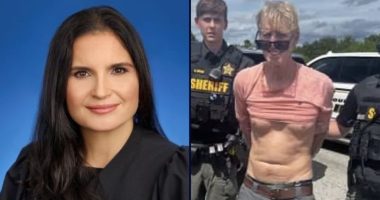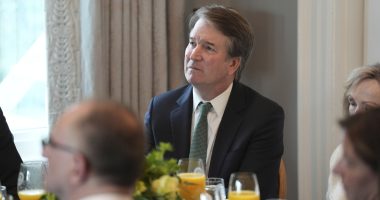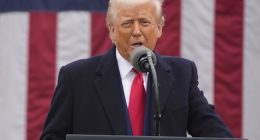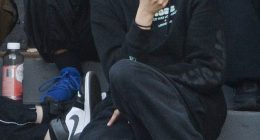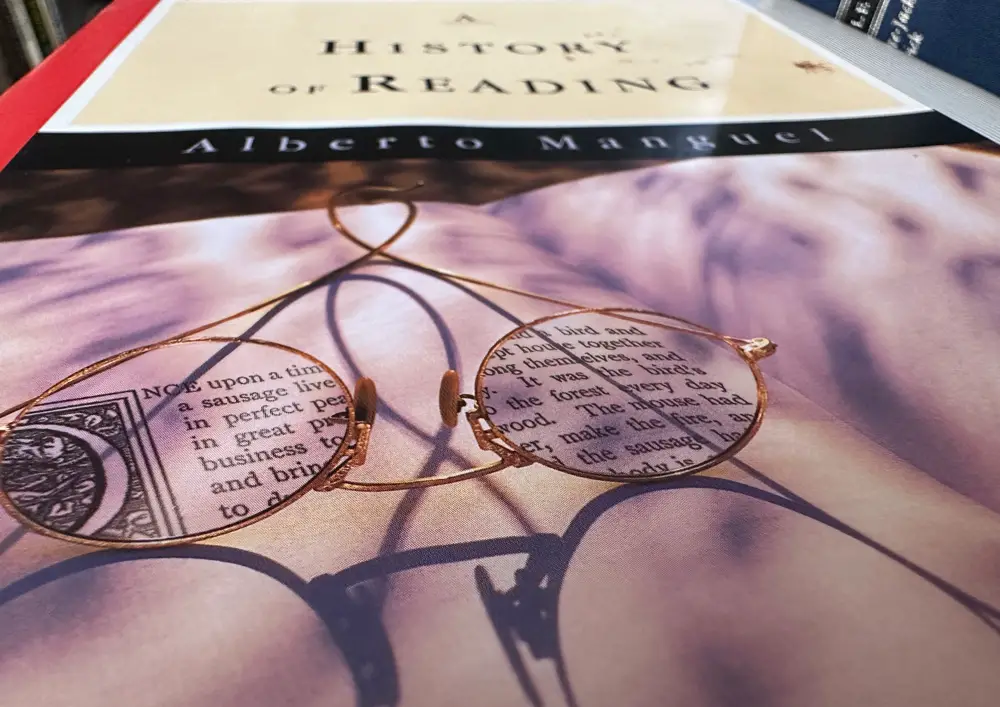
The idea had been rattling around in my head since I’d seen a version of it in a recent Wall Street Journal: what were local leaders’ favorite reads of the year? It’d be a nice way to get past the usual news cycles, the tiresome controversies, the pigeonholes of titles and assumptions in which we imprison elected officials and other leaders most of the time, surely to their exasperation. Here’s a chance to see them under a different light–their reading light. It’s personal without being intrusive.
When I spoke to County Commissioner Don O’Brien about it at an event–he’s a voracious reader and was just then in the middle of a 1,200-page tome–he was immediately on board. That seemed to launch it. I improvised a very incomplete list (apologies to so many who were excluded: there’s next year) and emailed the question, asking for just three or four paragraphs in return. I promised my recipients that I’d let their words speak for them unedited (aside from the occasional stylistic adjustment) and that for once I’d stay out of the way, editorially.
I have loved every one of these contributions, and immensely appreciated every one of their authors for their insights and for piling yet higher my to-read list. This has been my favorite project of the year. It shows how minor, occasionally to the point of irrelevance, our political or ideological differences can be, or ought to be, when we connect on a cultural and personal or literary level, which is to say: a human, or humanist, level. Besides, I don’t think people were entirely wrong a thousand years ago to think of Pope Sylvester II as a magician–not because he gave us the abacus or our Arabic numbers, but because he read books. (At least for the duration of the holidays, let’s skip the part where Bertrand Russel tells us that because Sylvester read books, he was “consequently able to increase the power of the Church by inspiring metaphysical terrors.”)
The contributions appear in no particular order except for the first two: Judge Perkins, whose courtroom is to me the next best thing to a library, goes first because, as Brett Kavanaugh wrote in his last opinion before he was nominated to the High Court, courts are owed “deference piled on deference,” and O’Brien goes second, having been first to agree.
You have a long read ahead but not a boring one. I hope you enjoy it as much as I did, and that you tell us about your favorite read of the year in the comments.
–Pierre Tristam
![]()
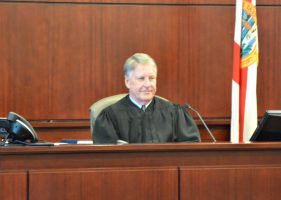
Hon. Terence Perkins, Circuit Judge in the Seventh Judicial Circuit
Red Star Rogue: The Untold Story of a Soviet Submarine’s Nuclear Strike Attempt on the U.S., by Kenneth Sewell and Clint Richmond.
One of the most intriguing books I read this summer was Red Star Rogue by Kenneth Sewell and Clint Richmond. A true story of a Russian nuclear missile Submarine that sank in the Pacific waters around Hawaii during the height of the Cold War. The loss of ballistic missile submarine K-129 and its entire crew in 1968 was kept top-secret for decades.
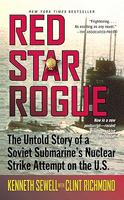 This is the intriguing story of a rogue Russian submarine and its crew intent on launching a nuclear strike against Hawaii to provoke a global war between the United States and China. This account was painstakingly documented in 2005 from declassified military reports by U.S. and Russian sources. Unlike Tom Clancy’s The Hunt for Red October, however, this is a true story. It describes life below the waves and the extreme dangers associated with decentralized control of nuclear weapons. Although the intended attack was ultimately unsuccessful, this international incident brought the nuclear powers to the brink of all-out nuclear war, at a time when tensions were high, and trust was low.
This is the intriguing story of a rogue Russian submarine and its crew intent on launching a nuclear strike against Hawaii to provoke a global war between the United States and China. This account was painstakingly documented in 2005 from declassified military reports by U.S. and Russian sources. Unlike Tom Clancy’s The Hunt for Red October, however, this is a true story. It describes life below the waves and the extreme dangers associated with decentralized control of nuclear weapons. Although the intended attack was ultimately unsuccessful, this international incident brought the nuclear powers to the brink of all-out nuclear war, at a time when tensions were high, and trust was low.
At its core, this is a story of the technology advantage enjoyed by the U.S. military and how that advantage, along with incredible ingenuity, enabled the United States military to recover the sunken sub and discover its rogue mission. But it’s also the story of regular individuals thrust into extraordinary circumstances, working together to solve one of the biggest mysteries of the cold war. In the end, this incident, originally known only to a handful of military planners and national security officers, reshaped how our nations control their nuclear forces, and how they cooperated to make rogue threats a thing of the past.
![]() 6
6
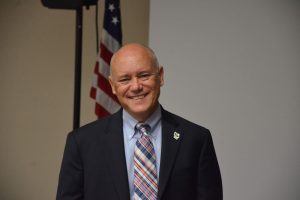
Donald O’Brien, Flagler County Commissioner and Insurance Executive
The Great Society: A New History, by Amity Shlaes
During 2023 one of the most interesting books, I read was Amity Shlaes’ The Great Society: A New History.
The book works through the history of President Lyndon Johnson’s so-called Great Society programs. The book focuses on the 1960s and early 1970s programs of social experiments such as busing and public housing projects, along with review of income redistribution programs including welfare, Medicaid, Medicare, and food stamps. Throughout my life I have mostly read about the positive aspects of these various programs. This book challenges the narrative that these programs were successes, and Shlaes contends that they made the problems they were meant to solve worse.
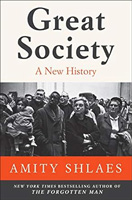 Shlaes writes in a storytelling format, like a novel. She delves into the key players of the era including Presidents Kennedy, Johnson, and Nixon. Her background information on other key players and personalities of the era includes the late Democratic Sen. Daniel Patrick Moynihan, who had been Nixon’s Counselor for Urban Affairs, labor leader William Reuther, activist Tom Hayden, and Arthur Burns, who chaired the Federal Reserve under Presidents Nixon, Ford and Carter. Shlaes helps to illustrate how these leaders and their personalities had a major impact on the politics and legislation of the time.
Shlaes writes in a storytelling format, like a novel. She delves into the key players of the era including Presidents Kennedy, Johnson, and Nixon. Her background information on other key players and personalities of the era includes the late Democratic Sen. Daniel Patrick Moynihan, who had been Nixon’s Counselor for Urban Affairs, labor leader William Reuther, activist Tom Hayden, and Arthur Burns, who chaired the Federal Reserve under Presidents Nixon, Ford and Carter. Shlaes helps to illustrate how these leaders and their personalities had a major impact on the politics and legislation of the time.
Shlaes is a conservative writer, and her take is that the consequences of the Great Society programs and “thoughtless idealism” are relatable to today. Shlaes blames the failures of the Great Society on a combination of factors that include overconfidence in government’s ability to solve social problems, top-down planning that ignored local needs, and a focus on short-term political gains over long-term solutions. This resonated with me as I think about the problems we are dealing with today such as inflation from a federal government post-Covid spending binge, homelessness, the challenges of affordable housing, societal mental health issues, open borders, and unsustainable levels of federal government spending, just to name a few.
I would recommend this book to anyone interested in American history, politics, or social policy. Shlaes is a professor of economics at Princeton University. I have read and learned from her other books, including The Forgotten Man: A New History of the Great Depression and Coolidge.
![]()

Dr. Stephen Bickel, Medical Director at Flagler County Health Department and Philanthropist
The Warmth of Other Suns: The Epic Story of America’s Great Migration, by Isabel Wilkerson
My favorite book of 2023 was The Warmth of Other Suns by Isabel Wilkerson. It was recommended to me by a friend who has a pretty good record of recommending good books (another of his recommendations this year was Jay Winik’s 1944: FDR and the Year that Changed History, which was definitely in my top five books of the year, even though it didn’t make Number One) so when he suggested this book to me, I took his recommendation very seriously and was glad I did.
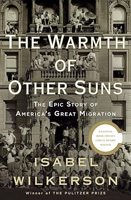 This book tells a fascinating story of three different groups of African-Americans who grew up in the Jim Crow era in the South in the 1930s and 40s and then moved away—one group to the Northeast, one to the Midwest, and one to Southern California. It actually covers the period from 1915 to 1970 because it goes into the early childhood of these people, and also covers their lives as they advance into old age. The thing that was most fascinating to me about this book is that I’ve always thought of civil rights issues and racial discrimination as macro topics (i.e., the effect of racial discrimination on society, and the need for policy changes, things like that). But I’ve never really had much insight into how racially discriminatory attitudes and policies affected people’s individual lives through the different periods of the 20th century.
This book tells a fascinating story of three different groups of African-Americans who grew up in the Jim Crow era in the South in the 1930s and 40s and then moved away—one group to the Northeast, one to the Midwest, and one to Southern California. It actually covers the period from 1915 to 1970 because it goes into the early childhood of these people, and also covers their lives as they advance into old age. The thing that was most fascinating to me about this book is that I’ve always thought of civil rights issues and racial discrimination as macro topics (i.e., the effect of racial discrimination on society, and the need for policy changes, things like that). But I’ve never really had much insight into how racially discriminatory attitudes and policies affected people’s individual lives through the different periods of the 20th century.
This book did a fantastic job of portraying the real and individual human impact of racial discrimination and racial attitudes and relations in general, in both the south and the north (and the west) as they played out in different forms throughout the 1900s, giving me some critical insight into what the three different groups of people experienced in terms of ongoing discrimination and limited opportunities as they moved around the country, and also how they dealt with this personally. Reading this book gave me a perspective I never really had before. It was both heart tugging and hopeful at the same time, helping me to see the humanity underlying our struggles, which I feel is the most important reason we should all aspire to create a more just and carrying society.
![]()
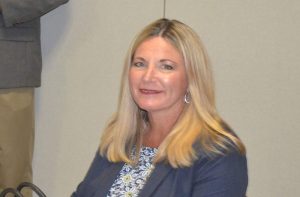
Heidi Petito, Flagler County Administrator
The Infinite Game, by Simon Sinek (2019)
The Infinite Game by Simon Sinek is a transformative exploration of leadership principles that resonates deeply with my experience as a local leader. Sinek challenges the conventional mindset of approaching leadership as a finite game with winners and losers and instead advocates for embracing an infinite mindset, focusing on long-term goals and sustainable success.
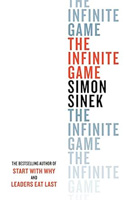 One of the book’s strengths is its ability to weave together insightful tales and real-world examples, making complex concepts accessible and applicable to the challenges faced by leaders in our community. Sinek argues that successful leaders prioritize building resilient, adaptable teams capable of navigating the unpredictable nature of the world we live in. This perspective has empowered me to foster a culture of collaboration and innovation within my local leadership role.
One of the book’s strengths is its ability to weave together insightful tales and real-world examples, making complex concepts accessible and applicable to the challenges faced by leaders in our community. Sinek argues that successful leaders prioritize building resilient, adaptable teams capable of navigating the unpredictable nature of the world we live in. This perspective has empowered me to foster a culture of collaboration and innovation within my local leadership role.
Additionally, Sinek emphasizes the importance of a just cause—a higher purpose that goes beyond short-term gains. As a local leader, this concept has motivated me to align my initiatives with the broader needs of our community, fostering a sense of purpose that resonates with both my team and the people we serve.
The book also delves into the significance of building trusting relationships and maintaining an open dialogue within teams. Sinek’s insights have influenced my approach to communication, encouraging a more transparent and inclusive leadership style that has strengthened the bonds among my colleagues.
The Infinite Game offers valuable lessons for local leaders striving to create positive and lasting impacts. By embracing an infinite mindset, I have found renewed inspiration to lead with purpose, build resilient teams, and contribute meaningfully to the well-being of our community. Sinek’s visionary perspective challenges leaders to think beyond the constraints of short-term victories, fostering a mindset that is not only beneficial for individual success but also for the sustained growth and prosperity of the entire community.
![]()
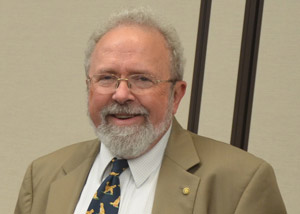
Bob Cuff, lawyer and former Palm Coast City Council member
Miami, by Joan Didion (1987)
Memory can make some places a dangerous destination. When I stumbled across Joan Didion’s Miami, I expected yet another take on a city I once considered my home. The book spans much of the time I lived there and I hesitated, fearing waves of nostalgia for some “best time of my life” mythology. Readers who know Didion could have told me that my fears were groundless. Sunlit memories of tropical locales (the Venetian Pool, Versailles Restaurant, University of Miami south campus) or events (the Orange Bowl parade), were all there, but I quickly realized she had seen these locations and institutions, along with the cultural upheaval of the city, more clearly than I had.
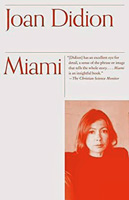 The book is, essentially, an essay on the place and culture that was Miami and Dade County from the 1960s through the 1980s, with nods to the more distant past. A reader looking for a travel guide should look elsewhere. But Didion’s descriptions of the factions of Cuban American culture, the impact of the Mariel boat lift and race riots that sent plumes of smoke from burning mattresses and cars into the skyline like World War II photos of bombed European cities, paint an accurate portrait of the city I remembered, just through a different lens. Her writing describes a place I recognized with something approaching nostalgia, even while acknowledging that her descriptions of what she saw and what I remembered often seemed to describe two entirely different realities.
The book is, essentially, an essay on the place and culture that was Miami and Dade County from the 1960s through the 1980s, with nods to the more distant past. A reader looking for a travel guide should look elsewhere. But Didion’s descriptions of the factions of Cuban American culture, the impact of the Mariel boat lift and race riots that sent plumes of smoke from burning mattresses and cars into the skyline like World War II photos of bombed European cities, paint an accurate portrait of the city I remembered, just through a different lens. Her writing describes a place I recognized with something approaching nostalgia, even while acknowledging that her descriptions of what she saw and what I remembered often seemed to describe two entirely different realities.
Didion could be an unsparing reporter, and a reader without personal attachment to Miami might reasonably ask who would want to visit the time and place described in this book. Someone looking for entertainment would be better served with Miami Vice reruns. Someone looking for insight into what many describe as the most foreign American city today will be well served. Like it or not, present day Miami is a quintessential American city, and Didion describes much of the origin story of a place that today can feel impenetrable to visitors, particularly Anglos, who go there seeking fun in the sun. But, as a textbook warning of the perils of trying to go home again or an introduction to a time and place that is almost, but not quite, history, Miami is a worthy destination.
![]()
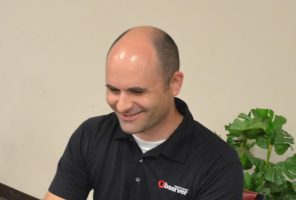
Brian McMillan, Publisher of The Observer
Romeo and Juliet, by Shakespeare (1597)
Although I have experienced this play many times in the past, I reread it yet again this year, and it was one of my most impactful reading experiences, yet again.
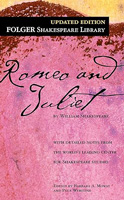 Romeo and Juliet is a love story so extreme that it is almost comical. Romeo is introduced as a whiner pining for his true love — Rosaline. How then are we to take him seriously when he immediately falls in love with someone else, Juliet, a girl who is barely a teenager, at first sight? Romeo’s friends and Friar Lawrence provide a counterweight, saying what we are bound to feel: that Romeo is misguided and foolish.
Romeo and Juliet is a love story so extreme that it is almost comical. Romeo is introduced as a whiner pining for his true love — Rosaline. How then are we to take him seriously when he immediately falls in love with someone else, Juliet, a girl who is barely a teenager, at first sight? Romeo’s friends and Friar Lawrence provide a counterweight, saying what we are bound to feel: that Romeo is misguided and foolish.
And yet, the magic is undeniable. With Shakespeare’s gushing poetry, every time I read the balcony scene, I fall in love again with falling in love, just as he is falling in love with Juliet. He worships her so freely, without shame, that I feel some permission to do the same. When I have had enough of the too-smart irony and too-responsible realism of our modern world, I escape to the balcony, where the light is always breaking through the window.
![]()
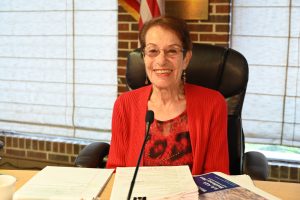
Jane Mealy, Flagler Beach City Commissioner
Klara and the Sun: A Novel, by Kazuo Ishiguro
I lead a book club that is part of the University Women of Flagler and enjoy being part of this group that meets once a month partly because it forces me to read books that I would not normally select on my own. Klara and the Sun is just such a book. I cannot say that I really liked the book, but it led to a terrific discussion during the club’s most recent meeting and leaves one with a great deal to think about, especially during this age of emerging Artificial Intelligence and humans’ relationship to it.
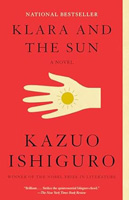 Klara is a solar-powered Artificial Friend (AF) who was purchased by a young girl named Josie from a store full of AFs to be a companion subsequent to the death of her sister. Josie, too, becomes quite ill and Klara has a deep belief that the sun can cure her. It appears as though Klara is being groomed to replace Josie, or become her avatar, should she, too, die. Because Klara didn’t function to the best of her ability during cloudy or smoggy days, she worked to reduce pollution in order to allow the sun to shine brightly. During her time in the store, Klara studied the humans who entered or passed by so she could learn about human behavior and emotions. Once she became part of Josie’s family, Klara came to understand how the various family members and friends functioned, and was able to adjust to the behaviors of each.
Klara is a solar-powered Artificial Friend (AF) who was purchased by a young girl named Josie from a store full of AFs to be a companion subsequent to the death of her sister. Josie, too, becomes quite ill and Klara has a deep belief that the sun can cure her. It appears as though Klara is being groomed to replace Josie, or become her avatar, should she, too, die. Because Klara didn’t function to the best of her ability during cloudy or smoggy days, she worked to reduce pollution in order to allow the sun to shine brightly. During her time in the store, Klara studied the humans who entered or passed by so she could learn about human behavior and emotions. Once she became part of Josie’s family, Klara came to understand how the various family members and friends functioned, and was able to adjust to the behaviors of each.
Klara and the Sun is beautifully-written and is filled with meditations on humanity, mortality, the nature of existence, sacrifice, and love.
![]()

Rick Staly, Flagler County Sheriff
Inside the Mind of BTK: The True Story Behind the Thirty-Year Hunt for the Notorious Wichita Serial Killer, by John Douglas and Johnny Dodd
A few years ago I created the Cold Case Unit in the Flagler County Sheriff’s Office to focus on unsolved homicides, missing persons and rape cases, believing that we owe it to the victims and their families to solve these cases. Fortunately, Flagler County does not have too many, but in my opinion one is one too many. We must be the voice for the victims and solve these crimes. Detective Sarah Scalia is making progress on many of these cases, which take significant time and resources to investigate. Please visit the page and help us solve a cold case. You just might have the puzzle piece we need to solve one.
I read this book after meeting the author, FBI Profiler John Douglas, in hopes that it might reveal techniques we could use and because I was curious about the search for the BTK killer because the search and murders occurred during most of my career, and the search and incidents were well-known in law enforcement circles.
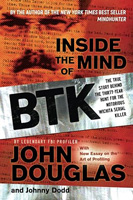 This book reveals the details of the 31-year search for the Wichita, Kansas serial killer known as BTK (the acronym spells his MO: Bind, Torture, Kill) that terrorized the City of Wichita by sexually assaulting and strangling victims. The killer would taunt the police with cryptic messages. He would brag to newspapers and TV stations with graphic details of the murders and victims. It was later found that he kept souvenirs from his victims, which I know from my training and experience is common, especially with serial killers and rapists.
This book reveals the details of the 31-year search for the Wichita, Kansas serial killer known as BTK (the acronym spells his MO: Bind, Torture, Kill) that terrorized the City of Wichita by sexually assaulting and strangling victims. The killer would taunt the police with cryptic messages. He would brag to newspapers and TV stations with graphic details of the murders and victims. It was later found that he kept souvenirs from his victims, which I know from my training and experience is common, especially with serial killers and rapists.
When he was finally caught and arrested, in 2005, he was a 61-year-old church-going, married man with two daughters. Your every day God-fearing man, community and church leader. But he led a double life that no one knew about, not even his wife or children. The book also revealed the destruction that he caused to not only the victims and their families, but also to the community as they learned the monster that had terrorized Wichita was their own father and husband, their neighbor and co-worker, but not the church-going family member he appeared to be. These deceptions are a very common characteristic of serial killers and rapists.
The book’s author was given access to the suspect, Dennis Rader, who revealed why he did the murders, why he stopped for nine years and then resumed the killings. The book also included an analysis of BTK’s early childhood and suggestions on how you can protect yourself from evil and predators like BTK. In the end the BTK killer’s arrogance, ego, new technology, modern science and the willingness and tactics of law enforcement to never stop searching for the killer caught him. To solve these cases you must understand the characteristics of the crime and the victim, but most importantly, the mind of the killer.
![]()

Jeff Douglas, President of Douglas Property & Development
The End of The World is Just the Beginning: Mapping the Collapse of Globalization, by Peter Zeihan
 While no Jared Diamond, Peter Zeihan in The End of The World is Just the Beginning assembles a massive, up-to-the minute demographic, geographic and natural resource overlay of the globe. Do the Democrats or Republicans have you in fear of China or Russia? What about the Southern Border? The numbers appear to betray the media narrative. Facts and real data are more precious than gold, and his sources (McKinsey, CIA?) deliver in spades.
While no Jared Diamond, Peter Zeihan in The End of The World is Just the Beginning assembles a massive, up-to-the minute demographic, geographic and natural resource overlay of the globe. Do the Democrats or Republicans have you in fear of China or Russia? What about the Southern Border? The numbers appear to betray the media narrative. Facts and real data are more precious than gold, and his sources (McKinsey, CIA?) deliver in spades.
You want to understand how the United States found itself in Vietnam, Panama, the Middle East, Iraq, or why you pay less for seafood and airfare than you did in the 1980s? It’s the 1944 Bretton Woods Conference. If you weren’t taught that, ask why and then read to see the world’s countries dissected as to their future prospect for dominance or mere survival. Without spoiling it, you will be glad to be in Palm Coast, the State of Florida, and most of all, The United States of America.
So, take a break from complaining in paradise and read a book that is grounded in more than a few facts. But beware: Zeihan is a pompous self-promoter.
![]()
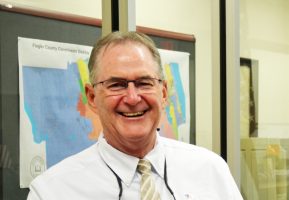
David Ayres, President of Flagler Broadcasting
Is This Anything? by Jerry Sinfeld
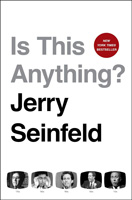 I chose this as my favorite book of the year because my wife “Q” gave it to me as a birthday present. Seinfeld’s “observational humor” reminds me that all people are just people. Is This Anything? is what comedians, musicians and other creative artists say to friends or family before trying the content on a real audience.
I chose this as my favorite book of the year because my wife “Q” gave it to me as a birthday present. Seinfeld’s “observational humor” reminds me that all people are just people. Is This Anything? is what comedians, musicians and other creative artists say to friends or family before trying the content on a real audience.
Seinfeld’s short, real-life encounters with all kinds of humans and situations give an awareness to just how unique and funny people really are without being condescending or polarizing. “You can never win an argument with someone smoking a cigarette. They’re always waving it around and when they step on it and put it out….argument over, you lost.”
If you don’t think late night talk shows are funny anymore, turn off the TV and chuckle to sleep with Is This Anything?
![]()
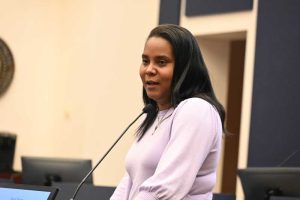
LaShakia Moore, Flagler County School Superintendent
The Four Agreements: A Practical Guide to Personal Freedom, by Don Miguel Ruiz
 After much reflection my most impactful book of 2023 was The Four Agreements by Don Miguel Ruiz. Throughout the year each of these four agreements have helped me navigate through my life. At this time, the first agreement, “Be Impeccable with Your Word,” speaks to me the most. Below is the agreement:
After much reflection my most impactful book of 2023 was The Four Agreements by Don Miguel Ruiz. Throughout the year each of these four agreements have helped me navigate through my life. At this time, the first agreement, “Be Impeccable with Your Word,” speaks to me the most. Below is the agreement:
“Speak with integrity. Say only what you mean. Avoid using the word to speak against yourself or to gossip about others. Use the power of your word in the direction of truth and love.”
![]()

Theresa Carli Pontieri, Lawyer and Palm Coast City Council member
Brown Bear, Brown Bear, What Do You See? by Bill Martin Jr. and Eric Carle
My favorite book that I read this year has nothing to do with the actual book, but rather, the memory it created. It was the children’s book, Brown Bear, Brown Bear, What Do You See?. And the reason it’s my favorite is because I read it with my little baby cousin while she was sitting on my lap, pointing at the pictures and doing her best to correctly name the animals and colors as we read. At 18 months old, she amazed me at how smart she is, how much she already knew at such a young age, and how happy it made her to flip from one page to the next, each filled with different animals and colors.
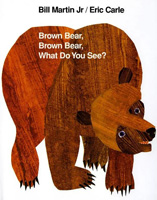 At her request, we read the book three times back to back, and each time, as she correctly named the animals and colors, she’d clap at her own accomplishments. It should also be noted that at this time, she was in a phase of pointing to random things around the room and “educating” us adults at what the items were. Every time she was correct, we’d tell her, “that’s right, good job!” She’d smile and clap and then find another item to glowingly point out and name. So, this book was perfect for her at this stage of her learning, and she could not have been more elated to sit on my lap and read it with me.
At her request, we read the book three times back to back, and each time, as she correctly named the animals and colors, she’d clap at her own accomplishments. It should also be noted that at this time, she was in a phase of pointing to random things around the room and “educating” us adults at what the items were. Every time she was correct, we’d tell her, “that’s right, good job!” She’d smile and clap and then find another item to glowingly point out and name. So, this book was perfect for her at this stage of her learning, and she could not have been more elated to sit on my lap and read it with me.
It’s embarrassing to admit, but this was the first time in my life that I had ever had an experience like this with a child of this age. I don’t have children of my own, so my little baby cousins and my godchildren are who I have watched grow from babies to toddlers, from toddlers to teens, and from teens to (gulp) adults. My godson is 18 years old as of this December, and to think that only 18 “short” years ago, he likely had a moments with his mom reading books like Brown Bear, Brown Bear and making memories similar to the one my baby cousin created for me.
Time at this young age is so precious, and it flies by. So, for me, it’s not about the book, but the memory. The smile on a baby’s face when she’s proud of her own growth and the happiness it created in my heart to spend this time with her. While I already knew my animals and colors, she taught me much more that day: to savor those moments, to bask in those little proud hands clapping, and to cherish those huge baby smiles.
![]()
Read Related Also: Kim Kardashian mocked for ‘making grilled cheese’ after daughter Chicago, 5, revealed her famous mom ‘never cooks’
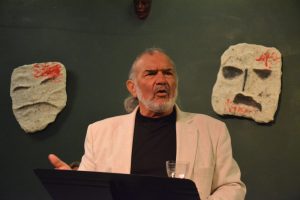
John Sbordone, Writer, Director, Co-Founder of City Repertory Theatre
The Soul of America: The Battle for Our Better Angels, by Jon Meacham
After falling prey to Mecham’s logic numerous times on various news broadcasts, I thought I’d try a recent book. I’ve always been a great fan of David McCullough, intrigued by his extraordinarily readable historical biographies. Well, Meacham’s assessment of historical trends surpassed even McCullough’s in my mind.
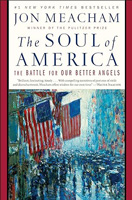 The Soul of America explores how America has withstood times of crisis and how leaders like Lincoln, Teddy Roosevelt, Franklin Roosevelt and others have guided us through troubled moments, leaving us unified and with renewed hope. Meacham maintains that we have endured far darker periods than our own and that we have weathered them, invigorated by new obstacles and challenges.
The Soul of America explores how America has withstood times of crisis and how leaders like Lincoln, Teddy Roosevelt, Franklin Roosevelt and others have guided us through troubled moments, leaving us unified and with renewed hope. Meacham maintains that we have endured far darker periods than our own and that we have weathered them, invigorated by new obstacles and challenges.
The yin and yang motivating American lives are fear and hope. Leaders throughout our history have propelled feelings and events through the manipulation of these forces. Meacham illustrates these opposing forces through the rise of the Ku Klux Klan and the toxicity of the McCarthy era, juxtaposed with the achievements of Lincoln, Truman and Lyndon Johnson. Jon Meachum takes us through the quagmire of our treacherous times and demonstrates how some of our best leaders have led us to find our Better Angels. It’s a good read.
![]()
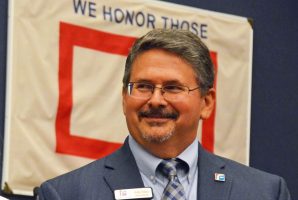
Andy Dance, Flagler County Commission Chair
The H-Factor: The Intersection Between Humility and Great Leadership, by Matthew Sowcik
I must be honest, my first thought when tasked with writing a summary of a recent book I’ve read was to urge readers to explore Ian McHarg’s Design with Nature. Landscape Architecture magazine calls it “This century’s most influential landscape architecture book.” It has been over 43 years since I read it, back in the landscape architecture studio at the University of Florida, but the message of the book rings as true now as did back then as mankind still struggles to find a balance between the built environment and nature. If you find time, it is a must read.
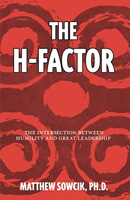 Moving forward, I present the most recent book that I’ve read, The H-Factor: The Intersection Between Humility and Great Leadership by Matthew Sowcik.
Moving forward, I present the most recent book that I’ve read, The H-Factor: The Intersection Between Humility and Great Leadership by Matthew Sowcik.
Professor Sowcik is one of the instructors for the Florida Association of Counties’ Institute of County Government’s Advanced County Commissioner (ACC) classes. Sowcik introduced his new book to our ACC2 class last summer as part of leadership training. Sowcik surmised that the importance of humility in leadership had largely gone ignored, and he set out to write a book that includes humility in leadership development and practice.
Merrian-Webster defines humility, a noun, as “the freedom of pride or arrogance: the quality of being humble” (not proud or haughty; not arrogant or assertive). “If leadership has a secret sauce, it may well be humility. A humble boss understands that there are things he doesn’t know. He listens: not only to the other bigwigs in Davos, but also to the kind of people who don’t get invited, such as his customers,” The Economist wrote 10 years ago.
Sowcik recalls that in the 20 years that he has taught leadership at the University of Florida, not one of his students has cited “humility” when asked to name the most important trait or characteristic of a leader. He always got answers from the students like “integrity,” “vision,” “being a good communicator,” “innovative,” “strategic thinker” or being a “team player.” However, Sowcik points out that “research has shown humility has a positive relationship with every single answer given by the students. This means that leaders who are humble are more likely to demonstrate every single one of those qualities the students mentioned.”
Through the research he uncovers in his book, Sowick hopes to make the “point that humility might be the best kept secret in achieving greatness in leadership and leadership development.” But he also expands his conclusion to include everyday life by stating that while humility make us better leaders, it also “makes us better spouses, fathers, mothers, sons, daughters, friends and better people.”
The pressing question remains: Why does the general public overlook humility as a leadership trait? Recent election results may indicate a return to humility as a positive, electable trait.
“How does humility manifest itself in leadership and in life? A humble person is more concerned about what is right than about being right, about acting on good ideas than having the ideas, about embracing new truth than defending outdated position, about building the team than exalting self, about recognizing contributions than being recognized for making it.”–Stephen Covey, The Seven Habits of Highly Effective People.
![]()
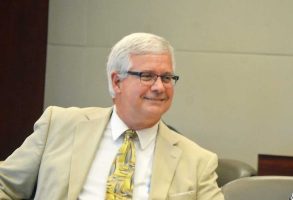
Ray Warren, Retired Assistant Public Defender in the Seventh Judicial Circuit
INFAMY: Pearl Harbor and Its Aftermath, by John Toland
As a preface to my comment about an interesting book I finished earlier this year, by long standing executive order all classified documents are eligible for review for eventual release after 25 years unless the documents fit into one or more of nine categories. Then, the eligibility for release date is 50 years, again with the concomitant review prior to release. With very few instances, certain secret documents will remain secret for at least 75 years.
In 1982, 41 years after the Japanese surprise attack on Pearl Harbor, John Toland released his historical assessment of the many congressional inquiries into the event, titled: INFAMY: Pearl Harbor and Its Aftermath. I consider his scholarship as intellectually sound and wide ranging and encourage anyone who leans toward historical scholarship to read the book.
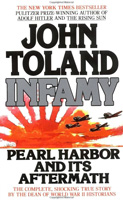 In my case, I started reading Toland’s work a number of years ago but set it aside because of its emphasis on a potential conspiracy to erase all records of an alleged December 4, 1941, Japanese “winds execute” message that American codebreakers had translated. Even today, building a conspiracy theory on alleged records that cannot be found piques little interest in me. However, as current events tumbled over each other in the long path leading to the 2024 election, I reconsidered my initial disinterest in investing the time to finish the book. I learned about the nefarious contests and schemes by Republicans and Democrats on how to conduct nine separate hearings into the absent messages during the war. Having completed the read, I have to admit that our current partisan legislative delegations have nothing on the political scheming that went on during and after World War II.
In my case, I started reading Toland’s work a number of years ago but set it aside because of its emphasis on a potential conspiracy to erase all records of an alleged December 4, 1941, Japanese “winds execute” message that American codebreakers had translated. Even today, building a conspiracy theory on alleged records that cannot be found piques little interest in me. However, as current events tumbled over each other in the long path leading to the 2024 election, I reconsidered my initial disinterest in investing the time to finish the book. I learned about the nefarious contests and schemes by Republicans and Democrats on how to conduct nine separate hearings into the absent messages during the war. Having completed the read, I have to admit that our current partisan legislative delegations have nothing on the political scheming that went on during and after World War II.
If the Republicans had been able to establish that a Japanese message had indeed been intercepted and translated on December 4, 1941, then the question would have been whether it had been delivered to and suppressed by a Democratic administration prior to the attack. Proof of such a suppression of a vital warning message could have set back the Democratic Party for decades.
Even today, 40 years after the release of the book, no one has been able to find a copy of the translation of the critical alleged Japanese message. The strongest evidence known today comes from a British radio interception team in Hong Kong that reported that it had intercepted the “winds execute” message, but there is no proof that the British military forwarded the report to their American counterparts.
Yes, one conspiracy theory holds that a massive effort to cull records from the military archives took place within a week of the attack, but no competent and reliable evidence of such a culling exists. Some nine witnesses eventually were willing to testify to having seen the message, but two recanted their testimony and others were extremely vague in how far they were willing to go.
In the end, Admiral Kimmel and General Short never truly achieved the exoneration that would have come had proof of suppression of the message been established.
Some, perhaps only a few, of the many and diverse conspiracists that exist among us all, remain wedded to the belief that FDR intentionally suppressed the message in order to draw American forces into the war, sacrificing thousands of soldiers, sailors and Marines.
Perhaps, 80 years from now, a new crop of conspiracists among us all will clearly see a link between President Biden and Chinese money, through Hunter’s 20 corporate shell accounts, despite the absence of any documentation of the link. There seems to be no shortage of FlaglerLive commenters who subscribe to the Chinese money belief, and I don’t see it going away anytime soon. Who needs documentation, when hate media is more than willing to provide the unsworn oral history necessary to maintain the conspiratorial belief?
![]()
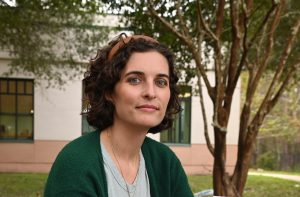
Coutney VandeBunte, Educator, Co-Host of Moms Into Literary Freedom Podcast
And Tango Makes Three by Peter Parnell and Justin Richardson.
Selecting a favorite book is akin to choosing a favorite child, but if I must choose one, I choose And Tango Makes Three by Peter Parnell and Justin Richardson. This heartwarming tale about two male chinstrap penguins, Roy and Silo, became a touchstone for my school board discussions on HB1069, the aptly nicknamed the “Don’t Say Gay” law. Authored by a gay couple raising a daughter, the story celebrates non-traditional families… to some people. To others, it is “anti-family” due to its “homosexual overtones,” revealing societal divisions on what constitutes a family.
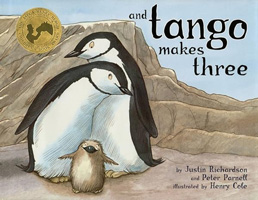 Roy and Silo, who adamantly refused female companionship, (unlike Moms for Liberty co-founder, Bridget Ziegler), began displaying classic pair-bonding behavior, such as singing and bowing–super gay, I know. But the real-world application of science and animal behavior in this book is one of many reasons it is my favorite. The best educators know that the secret to student success is through relevant and engaging storytelling…Bonus points if it also leads to empathy and compassion for those who are different from you.
Roy and Silo, who adamantly refused female companionship, (unlike Moms for Liberty co-founder, Bridget Ziegler), began displaying classic pair-bonding behavior, such as singing and bowing–super gay, I know. But the real-world application of science and animal behavior in this book is one of many reasons it is my favorite. The best educators know that the secret to student success is through relevant and engaging storytelling…Bonus points if it also leads to empathy and compassion for those who are different from you.
Roy and Silo want a family so bad that they start sitting on rocks, wishing them to be eggs. The scientific observations gathered from this story is an unprecedented example of animal behavior that could inspire even the youngest of students to become scientists. But, the hateful and hypocritical “Moms for Liberty” perpetuate misconceptions and unwarranted fears by claiming books like this will make you gay…or maybe even want to sit on rocks. When open-minded zookeeper, Mr. Gramsay, replaces one of Roy and Silo’s egg-rocks with a real-life orphaned egg, they become the world’s first (documented) gay penguin parents.
Aside from the engaging scientific content and the positive affirmation for non-traditional families, I am choosing this book because of the author’s bravery and dedication. Parnell and Richardson, along with a few students, filed a lawsuit to fight for their first amendment rights when their book was removed and restricted in Lake and Escambia counties (and more). The censorship of this book, and others like the high school level All Boys Aren’t Blue by George M Johnson and Out of Darkness by Ashley Hope Perez, have a few things in common: they share diverse experiences, are written by marginalized authors, and have been censored out of fear from school districts due to laws such as HB 1069, and the “Stop WOKE” Act.
The language of these laws is so ambiguous that school districts are playing it “safe” by curating their libraries to reflect only the values and viewpoints of bigots like Ron Desantis and the pressure group known as “Moms for Liberty.” One reason for this is because school districts are required to pay all legal fees incurred by lawsuits from parents and/or community members who sue them for having books like And Tango Makes Three accessible to students. But, like Roy and Silo’s adamant refusal of female companionship, I refuse to stop advocating for the true liberties of marginalized groups, and I invite you to do the same…it is truly liberating.
![]()
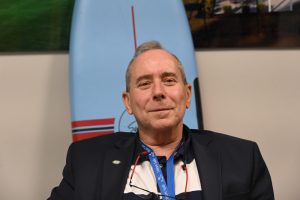
David Alfin, Palm Coast Mayor
Charter of the New Urbanism, by the Congress for the New Urbanism, Emily Talen, Editor
Charter of the New Urbanism is an inspiring and thought-provoking book providing both imaginative essence and practical essentials for anyone interested in the future of urban living. The book offers a hopeful and compelling blueprint to create more livable and sustainable cities for our short and longer-term futures. The book is considered by some a manifesto describing principles of urban planning that advocates for the creation of walkable, sustainable, and vibrant communities. The Charter also points out errors and pitfalls of some unsuccessful historical approaches utilizing less thoughtful planning.
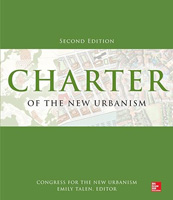 The Charter provides a comprehensive overview of the New Urbanism movement advocating for the design of walkable, human-scale neighborhoods with a diverse mix of housing, work, and leisure spaces closely integrated. The resulting development emphasizes the importance of creating communities that foster social interaction and a sense of belonging. The promotion of a culture that nourishes social interaction in our own Palm Coast is particularly relevant as the city matures with accelerating growth. It is now our opportunity to plant new and diverse roots, providing a personality of social branding supported by long-term financial sustainability.
The Charter provides a comprehensive overview of the New Urbanism movement advocating for the design of walkable, human-scale neighborhoods with a diverse mix of housing, work, and leisure spaces closely integrated. The resulting development emphasizes the importance of creating communities that foster social interaction and a sense of belonging. The promotion of a culture that nourishes social interaction in our own Palm Coast is particularly relevant as the city matures with accelerating growth. It is now our opportunity to plant new and diverse roots, providing a personality of social branding supported by long-term financial sustainability.
The New Urbanism described in the Charter embraces and underscores a never-ending priority for conservation and greenspace preservation. The framework makes it an essential element to protect Palm Coast’s natural flora, fauna, and unique historical assets, further supporting long-term resiliency and sustainability. Charter of the New Urbanism has made a significant difference in my thinking about best planning practices for Palm Coast by defining a mandate to practice smart managed growth for future development.
![]()
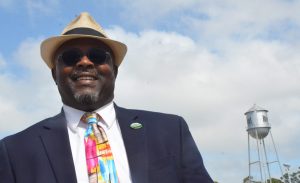
Dr. Alvin Jackson, Bunnell City Manager
A CEO Does Three Things, by Trey Taylor
A CEO focuses on only three things. He sets the overall vision and strategy of the company and communicates it to all stakeholders. He recruits, hires, and retains the very best talent for the company. He makes sure there is always enough cash in the bank.
In this book, those three focuses are represented by one word each: Culture. People. Numbers. Properly focused, a CEO does these three things and nothing else. Every task of every day should relate directly to improving one of the pillars of this trinity.
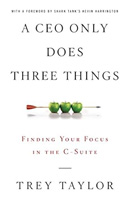 To lead others, you must understand People: how they tick, how they process information and choose to accomplish certain tasks, what motivates them and why. The greatest executives reach People at their deepest, most fundamental levels. To understand People, we must first understand ourselves and rely on the universal laws of human development.
To lead others, you must understand People: how they tick, how they process information and choose to accomplish certain tasks, what motivates them and why. The greatest executives reach People at their deepest, most fundamental levels. To understand People, we must first understand ourselves and rely on the universal laws of human development.
Every person is comprised of three distinct yet independent psychological dimensions. Each dimension plays a role in your life, and they work together to bring levels of success consistent with your inner values and self-beliefs.
At the top of the pyramid is the “I Think” dimension, the intellectual part of you that learns, makes decisions, and exercise choice. In the center of the pyramid is the emotional dimension, which we label as “I Feel.” It is here that your feelings and emotions reside in a semiconscious state. The foundation of the pyramid, “I Am,” represents the creative dimension that gives rise to your sense if identity. Your values, beliefs, self-image (identity and sense of purpose), and several other powerful psychological mechanisms all reside here in a completely unconscious state
This book is designed to build within you the desire and ability to shape your life by focusing on causes, not effects. The Three Dimensions of Human Behavior model is an effective means of doing just that. If you develop an understanding of what your carry inside you and an ability to leverage you positive traits while dispelling you negative ones, how much better will your life be? How much better a CEO will you be?
![]()
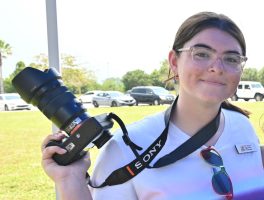
Eryn Harris, Flagler Pride Founder and Student Filmmaker
Perseverance: Episodes of Black History from the Rural South, by Randy Jaye
In a county that continues to grow with excruciating speed, most of Flagler County’s residents, from longtime to snowbird to newcomers, typically have one thing in common. They are blissfully unaware of the historical significance of the cities they live in. It is not often made apparent by any of the local municipalities, but Flagler County’s history is riddled with racism not as long ago as one may think, as is the case with most anywhere else in the South.
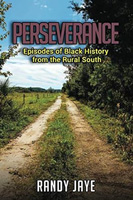 This year, I read Randy Jaye’s historical nonfiction book, Perseverance: Episodes of Black History from the Rural South, which chronicles instances of notable or shocking Black history in Flagler County as a microcosm of the rural South’s rampant racial segregation and discrimination. I am a student filmmaker and longtime resident of the county, and hearing about this deplorable history inspired me greatly to get the word out. I completed work on my short film, “Beyond The Tracks,” this Fall (Screening at the St. Auggie Shorts Film Festival, March 1st-2nd), a film about the very same topics, and Jaye’s incredibly deep research was indispensable to the film’s success.
This year, I read Randy Jaye’s historical nonfiction book, Perseverance: Episodes of Black History from the Rural South, which chronicles instances of notable or shocking Black history in Flagler County as a microcosm of the rural South’s rampant racial segregation and discrimination. I am a student filmmaker and longtime resident of the county, and hearing about this deplorable history inspired me greatly to get the word out. I completed work on my short film, “Beyond The Tracks,” this Fall (Screening at the St. Auggie Shorts Film Festival, March 1st-2nd), a film about the very same topics, and Jaye’s incredibly deep research was indispensable to the film’s success.
“Perseverance” is a must-read for anyone living in the Flagler/Volusia/St. Johns area, detailing some of the most significant examples of racist attitudes and actions from local governments and citizens alike. This includes county founders’ likely ties to the Ku Klux Klan as well as Klan rallies, segregated school systems, and Black voter suppression with threats of violence.
Did you know that Flagler County was one of the last counties in the United States to desegregate its schools, doing so only when it was court-ordered? That’s okay: most of your peers probably didn’t know either, due to the extensive concealment of information in the interest of upholding Flagler County’s image as the seemingly quaint retirement paradise it knows it isn’t. If a brief mention of the county’s intolerant history is surprising, then Randy Jaye’s Perseverance: Episodes of Black History from the Rural South is sure to be an eye-opener.
![]()
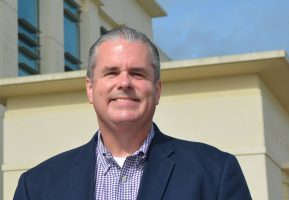
Dr. Joe Saviak, Attorney, Professor, Executive, Consultant, and Teacher of the Flagler County Local Government Leadership Academy
It’s Your Ship: Management Techniques from the Best Damn Ship in the Navy, by Commander Michael Abrashoff
It’s wonderful to read a new book. It can also be valuable to re-read a specific book. In 2023, I read It’s Your Ship by Commander Michael Abrashoff a second time. The book was recommended to me several years ago by now retired City of Palm Coast Fire Chief Jerry Forte. It is a popular book within the Palm Coast Fire Department under Chief Kyle Berryhill. It should be required reading in every private, public, and non-profit sector organization in America.
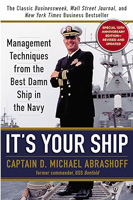 It tells the story of how Commander Michael Abrashoff transformed the worst ship to being the best ship in the United States Navy. He was not allowed to change anything on the ship yet everything changed through his model of leadership. He trusted his team. He created an environment where everyone was safe to share new ideas, admit mistakes, report problems, or tell the leadership they needed to improve and how. He pushed decisions down, gave all the credit away, and took the blame when something went wrong. He grew leaders.
It tells the story of how Commander Michael Abrashoff transformed the worst ship to being the best ship in the United States Navy. He was not allowed to change anything on the ship yet everything changed through his model of leadership. He trusted his team. He created an environment where everyone was safe to share new ideas, admit mistakes, report problems, or tell the leadership they needed to improve and how. He pushed decisions down, gave all the credit away, and took the blame when something went wrong. He grew leaders.
Freed to think for themselves and make decisions, the sailors produced a series of best practices which would be adopted by the entire U.S. Navy. These innovations improved productivity, performance, retention, efficiency, safety, and morale. The ship and sailors won even more awards and made greater achievements after Abrashoff retired. He had transformed the culture from rigid, bureaucratic, distrustful, and micromanaging to one where every sailor felt they owned the ship, trusted their teammates, and took personal responsibility for making it a model to emulate for the entire U.S. Navy.
![]()
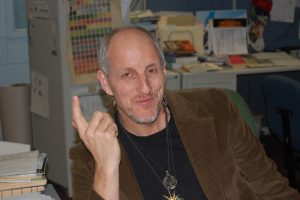
Rick De Yampert, Editor of Vox Pop, Author and Culture Writer, FlaglerLive
The Creative Act: A Way of Being, by Rick Rubin
We are in a Sgt. Pepper-esque era of rock music writing. Past apocryphal, mythical or exaggerated tales of debauchery – such as, say, the Viking wanna-bes of Led Zeppelin’s 1970s tour entourage stuffing a mud shark up a willing groupie’s vagina – will no longer suffice (as if such legends ever did). These days the rock realm is bequeathing us deep dives into the creative process and ruminations on Things That Actually Matter.
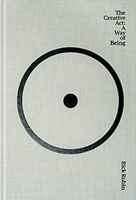 In 2021, Paul McCartney gifted us his epic yet intimate, song-by-song quasi-autobiography, The Lyrics: 1956 to the Present – released in paperback this November with seven new song commentaries (yay!).
In 2021, Paul McCartney gifted us his epic yet intimate, song-by-song quasi-autobiography, The Lyrics: 1956 to the Present – released in paperback this November with seven new song commentaries (yay!).
U2’s Bono unpacked his psyche and music-making in last year’s Surrender: 40 Songs, One Story. While rubbing psychological, philosophical, poetical and-or physical elbows with everyone from Mandella, Obama, and hip-hop’s Chuck D to Rumi the mystic Sufi poet and “the immortal invisible,” St. Bono also confessed his bloated ego and wrestled with his messianic tendencies like Jacob placing his size 10 boot up that angel’s size 8 asshole.
This year’s most arresting book comes from master music producer Rick Rubin with his Zen-tastic The Creative Act: A Way of Being. “I set out to write a book about what to do to make a great work of art. Instead, it revealed itself to be a book on how to be,” Rubin says.
Rubin isn’t the first to assert that we humans are at our most God/Goddess-like when we grapple with, succumb to and nurture our innate creative impulse, whether that’s baking a cake or sloshing paint onto a canvas. For worthy predecessors, see 1975’s The Courage to Create by humanistic-existential psychologist Rollo May, and 2004’s Creativity: Where the Divine and Human Meet by pan-cultural theologian Matthew Fox.
With its 80-plus aphoristic chapters that bear such titles as “Everyone Is a Creator,” “Submerge (The Great Works),” “Beginner’s Mind,” “The Ecstatic,” “Lightning Bolt” and “Why Make Art?,” Rubin’s work is a “Yoga Sutras of Patanjali” for humanity’s creative drive.
![]()
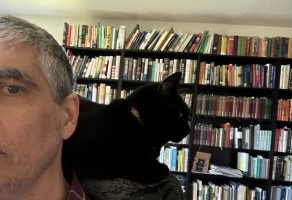
Pierre Tristam, The Blogger
The Sea Trilogy, by Rachel Carson
I’m cheating. That’s really three books in one. But it was hard enough to narrow it down even to these: I may have asked everyone to tell us their favorite book of the year, but in all honesty the question can be–as Courtney VandeBunte put it more elegantly above–a literary Sophie’s Choice. That said, The Sea Trilogy was more Star Trek than Styron. I felt like Carson was making me discover world after world after world, even though the worlds she writes about are almost literally underfoot: the ocean nearby, the sea life, the shore, the currents, the tides, the dunes, the barnacles. Even the barnacles, for whose resilience Carson makes you feel awe, and a certain existential awareness more powerful than Camus’.
 Carson is best known for Silent Spring, the 1962 book that launched the environmental movement. But the three books of the Sea Trilogy had made her relatively famous in the 1950s, not least because she wrote like Vermeer painted, even in her days as a writer for the U.S. Bureau of Fisheries.
Carson is best known for Silent Spring, the 1962 book that launched the environmental movement. But the three books of the Sea Trilogy had made her relatively famous in the 1950s, not least because she wrote like Vermeer painted, even in her days as a writer for the U.S. Bureau of Fisheries.
In Under the Sea Wind, first in the trilogy, Carson personalizes various sea creatures into individual characters. The device that could have been ridiculously hokey. But it’s a master stroke. We relate this way to our house pets. Carson does it with fish in the sea, and despite the often brutal environment. Even as she writes about the endless cycle of rapacity, of constant devouring, she manages to do it with feeling and not a hint of indifference, but no sentimentalism either, even when she describes the angler, “perhaps the ugliest, most repulsive, and most voracious of fishes.” I found her pages on the origin of life on earth better than Genesis.
The Sea Around Us takes a slight step back from the teeming life in the water to its mechanics–tides, currents, the eternal blackness that begins not so far down and the life you may find there against all odds, in that crushing pressure, and on such things as the similarities in human bones to how each of us “carries in our veins a salty stream in which the elements sodium, potassium, and calcium are combined in almost the same proportions as in sea water.” Always in Carson there is that circle of life (eventually to be corrupted with well-meaning but fatal anthropomorphism by Disney).
The Edge of the Sea was the more difficult–because most technical–book of the three, though also the most familiar: some of it describes our very shore here in Florida, its sand and rocks and crabs and untold unknowns to remind us that even here “our knowledge is encompassed within restricted boundaries, whose windows look out upon limitless spaces of the unknown.” I also learned that there are such things as jingle shells. That alone was worth the price of the book–which, incidentally, I would not have read had the Library of America not just re-issued these three titles, having never been aware of Rachel’s pre-Spring work. But it’s like Jane Mealy says: so much of reading’s pleasure is in the unexpected. I’d have never thought I’d be so gratefully immersed for 900 pages, which passed like 90.
So it is with reading. It is the closest thing we have to bottling space and time, allowing us to say: I read, therefore I am one with the world (“conversing with those of past centuries,” Descartes had written, “is much the same as travelling”). And as with life, there’s simply not enough time to read enough. It is like “Oceanus, the ocean river,” as Carson writes at the end of The Sea Around Us, “like the ever-flowing stream of time, the beginning and the end.”




